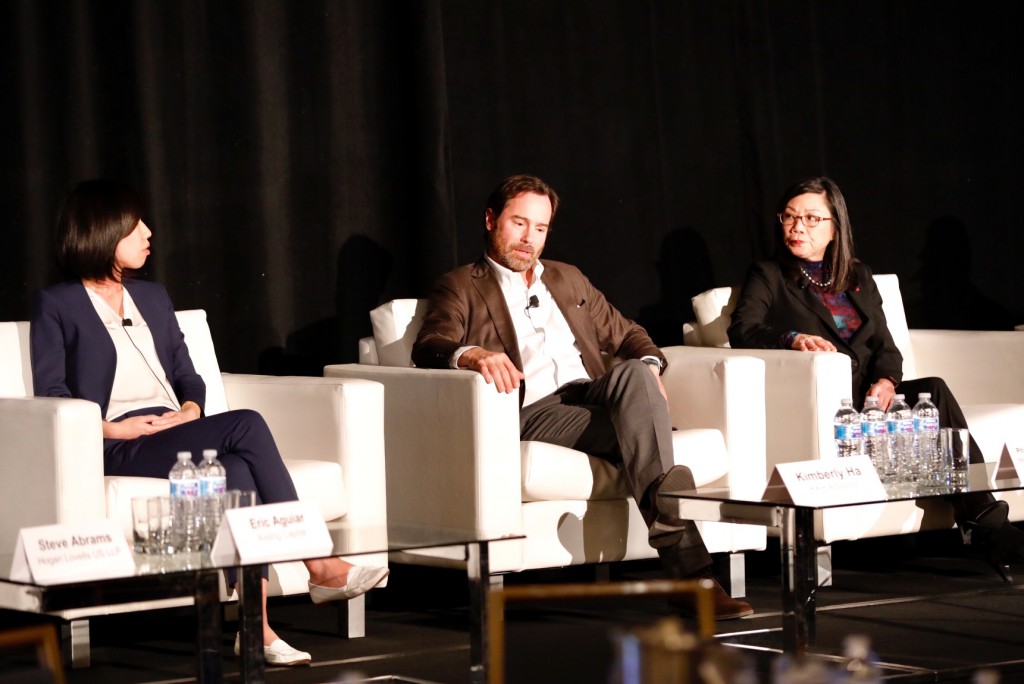2018 financing whipsawed from highs to lows in the course of six months, leaving investors perplexed. While touting signs of economic ease, they also talk of preparing for a possible financial “nuclear winter.”
They do agree, though, that M&A activity will increase in 2019, driven by volatility in the markets at the end of 2018, according to panelists at Tuesday’s Financing Frenzy luncheon plenary at the 2019 Biotech Showcase.

While speakers are divided as to whether M&A activity will increase or continue at the usual pace, they do agree that investors currently resemble “second grade soccer players who are all chasing the same ball. Investment groups and large pharma are all looking for the same characteristics in companies,” says Eric Aguiar, partner, Aisling Capital.
“Sickle cell and other orphan disease with a certain mechanism of action are getting funded, but larger Phase III companies with high capital costs are struggling much more than they have,” Aguiar says. “At the same time, new pools of capital are entering the market, so we’ll have to see how the public markets react.”
“There’s a lot of interesting science, but investors may be more selective about what they’ll invest in,” Philippe Lopes-Fernandes, SVP global head of business development and alliance management, Merck KGaA, suggests. For example, Aguiar adds, “There’s investor fatigue for CAR-T therapies, but targeting solid tumors remains interesting.”

Advances in data science are posing a conundrum for investors, according to Marian T. Nakada, VP venture investments, Johnson & Johnson Innovation (JJDC). “Data science is a real frontier. The ability to analyze and mine all kinds of data makes drug targeting more efficient, but how, as an investor, do you value those companies? It’s not as simple as valuing a drug company.” Questions remain regarding how data science relates to big pharma, how it affects valuations and liquidity for investors and what this means in terms of reimbursement and exclusivity. As pharma embraces AI, machine learning and digital medicine, Nakada says, “The pathway remains unclear.”
Plan a crossover strategy
Therefore, to weather the possible winter, “CEOs need to think outside the box when it comes to financing,” Aguiar says. “The problems are always the same but the solutions change.” He advises considering crossover financing, which was popular in 2015 and ’16 as a way to tide a company over through an IPO, as well as considering royalty deals and determining how much money could be raised by selling select assets. “There are more alternatives available today than even a few years ago and new capital is coming in, but we're looking at valuations differently than we did one year ago,” Aguiar says. How, exactly, he didn’t say.
“A crossover round is a sign of approval,” Kimberly Ha, CEO and founder, KKH Advisors, points out. She says companies wanting an IPO need one of three things to succeed: crossover funding to show an investor performed the due diligence, a partnership deal with an American or European company to validate the platform, or a management team with a successful, consistent track record.
Notably, in preparing for crossover financing or an IPO, messaging is becoming increasingly important. Panelists advised beginning to prepare for an IPO or crossover at least 18 months or, ideally, two years, before the expected date. Use that time to prepare the messaging and to create awareness of the company among research analysts and investment bankers.
“The IPO roadshow is not the place to meet potential investors for the first time. If you’re meeting on the roadshow for the first time, they probably won’t invest,” says Gabriel Cavazos, managing director, Leerink Partners LLC (which was acquired by Silicon Valley Bank in January). If you already have a relationship and this is the third or fourth time you’ve met, there’s a much better dynamic.
This is also the chance to hone the company’s competitive position, realizing that the market for the IPO may be completely different that today. Ha recommends ensuring the company has an experienced CEO or CMO who has gone through an IPO successfully or sold a company. It lends an aura of stability.
Creating a China strategy is not an instant solution, Ha points out. “Because of the hype about the Hong Kong Stock Exchange, a lot of companies want a Chinese angle, but you can’t just add a Shanghai or Hong Kong address to your website,” she says. The Chinese innovative biotech sector still needs to grow, learn and think about due diligence. “The US market has the most sophisticated investor set.”
Preparing for a crossover is the same process as preparing for an IPO, Aguiar says. “So, by preparing early, if you don’t like the crossover price, you can go straight to an IPO.”
Megarounds are another consideration, but the panel was mixed regarding their long-term value. They can raise the funds to take high science to Phase I, but doing so risks making it more difficult to raise subsequent funds. The $60 or $70 million raised can provide diversification and support multiple shots on goal but it also may trigger higher than necessary spending by a management team that finally feels flush. But, even if management is fiscally disciplined, raising a megaround risks overvaluing a company, panelists agree. That can cause problems when raising the next round.

If capital markets don’t open…
The panelists were the first to say they have no crystal balls. Financing is truly in a frenzy, currently, of uncertainty. Therefore, they advise educating big pharma about what you can offer, and preparing for a wide variety of alternative financing strategies. M&As are increasing in number, and collaborations and licensing deals are other options for innovative companies.
Asset-backed securities are options, too, but that is a discussion for another day.

